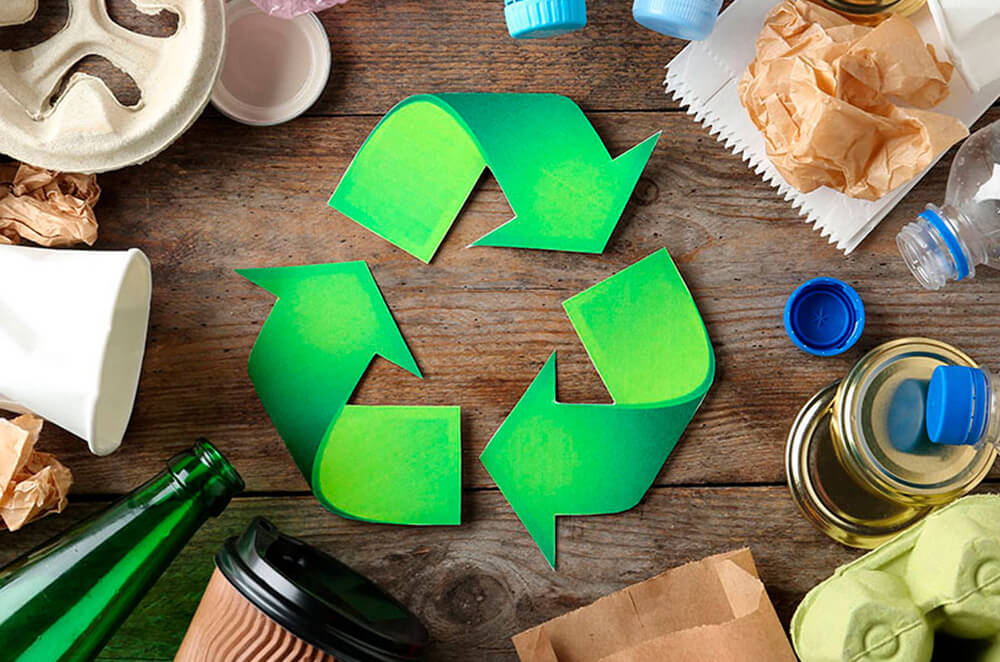Did you know irresponsible waste management contributes directly to climate change? Decomposing waste emits methane gas, which is a type of greenhouse gas that contributes to rising global temperatures. Plus, mismanaged waste pollutes our air, water and soil.
That’s why it is important for everyone to learn the proper way to separate and recycle the waste we generate every day, so as to limit our environmental impact. Below you’ll find a simple guide to learn how to sort your waste.
Blue bin
The blue bin is reserved for paper and carton only. This includes newspapers, magazines, phone guides, egg cartons (when clean), the carton cylinder from your toilet paper roll, and any carton or paper packaging.
- You should NOT place metallic paper, kitchen rolls, post-its, tetra briks or diapers in the blue bin.
Yellow bin
The yellow bin is for plastic, metal and tetra brik packaging. Aluminum trays and paper, cans, aerosol cans, deodorant and toothpaste tubes, plastic caps, plastic wrap and film, bubble wrap, empty medicine packaging and mesh from produce can also go in the yellow bin.
- You should NOT place baby bottles or comforters, plastic toys, kitchen utensils or half-empty aerosol cans or other metallic containers not specified above in the yellow bin.
Green bin
The green bin is for glass bottles (no matter the color), as well as glass jars and containers for food or cosmetic products.
- You should NOT place any crystal in the green bin. It is easy to confuse glass and crystal, but objects like light bulbs, homeware and mirrors are not made from glass and should not be placed in the green bin.
Brown bin
The brown bin is reserved for organic material, that is, food waste (though not all, see below), kitchen roll, egg cartons if they are dirty, coffee filters, etc. It is important to use compostable bags for the brown bin, not plastic bags.
- You should NOT place any fish or meat waste in the brown bin, nor any type of liquid or salad that has been seasoned. The brown bin is not for ash, tobacco, soil or toilet paper either.
Gray bin
All waste that doesn’t go into the bins specified above should go into the gray bin. But not all your ‘leftover’ waste can go into the gray bin. Things like batteries, cleaning or paint products, frying oil, inks and small electronics should be deposited in specified locations according to your local laws and regulations.
Just as you should know how to sort your waste, you should also remember that some packages or containers can be made of both carton and plastic, in which case each part of the container must be separated and sorted in the proper bin. This is often the case with beauty and cosmetics products in general.

